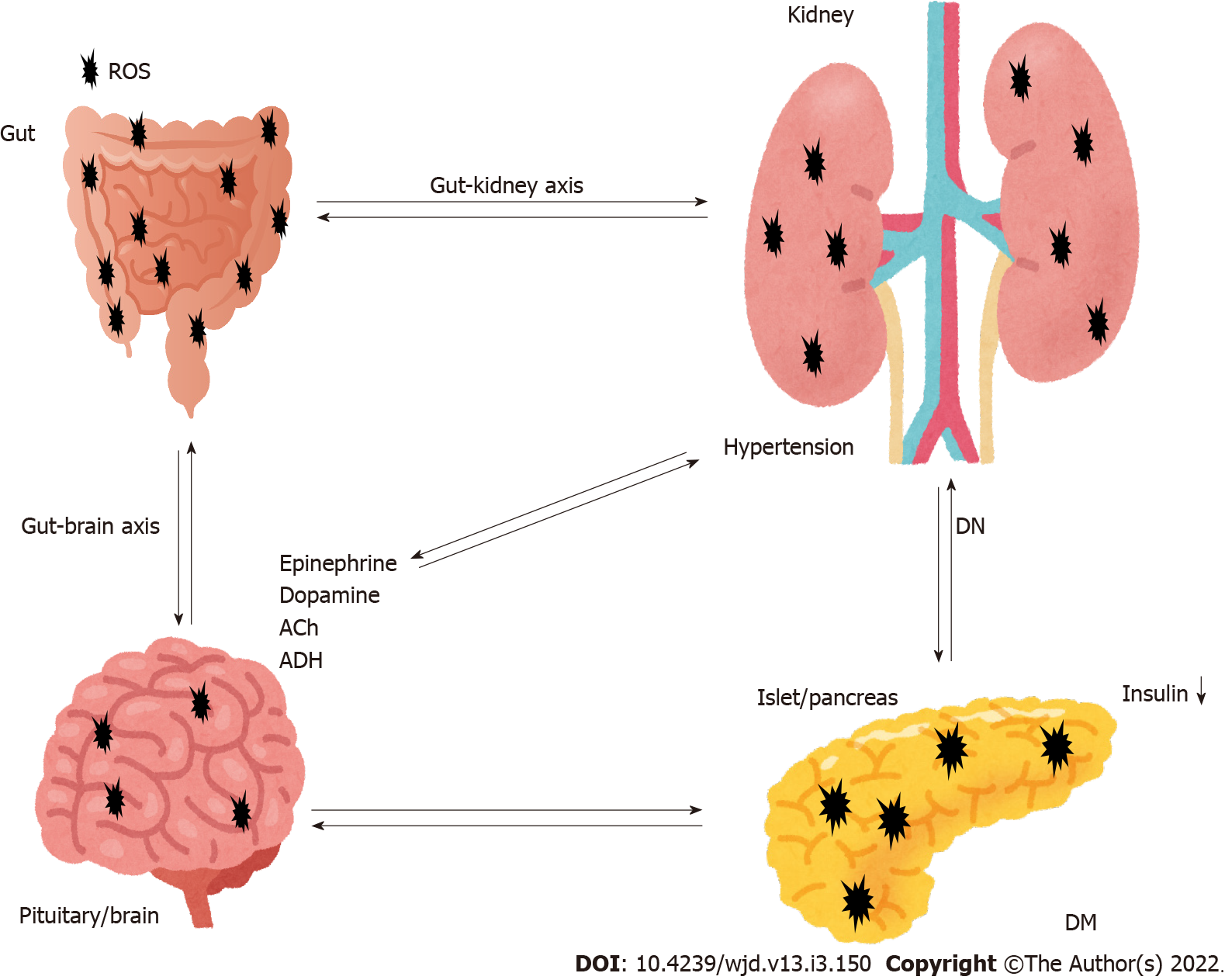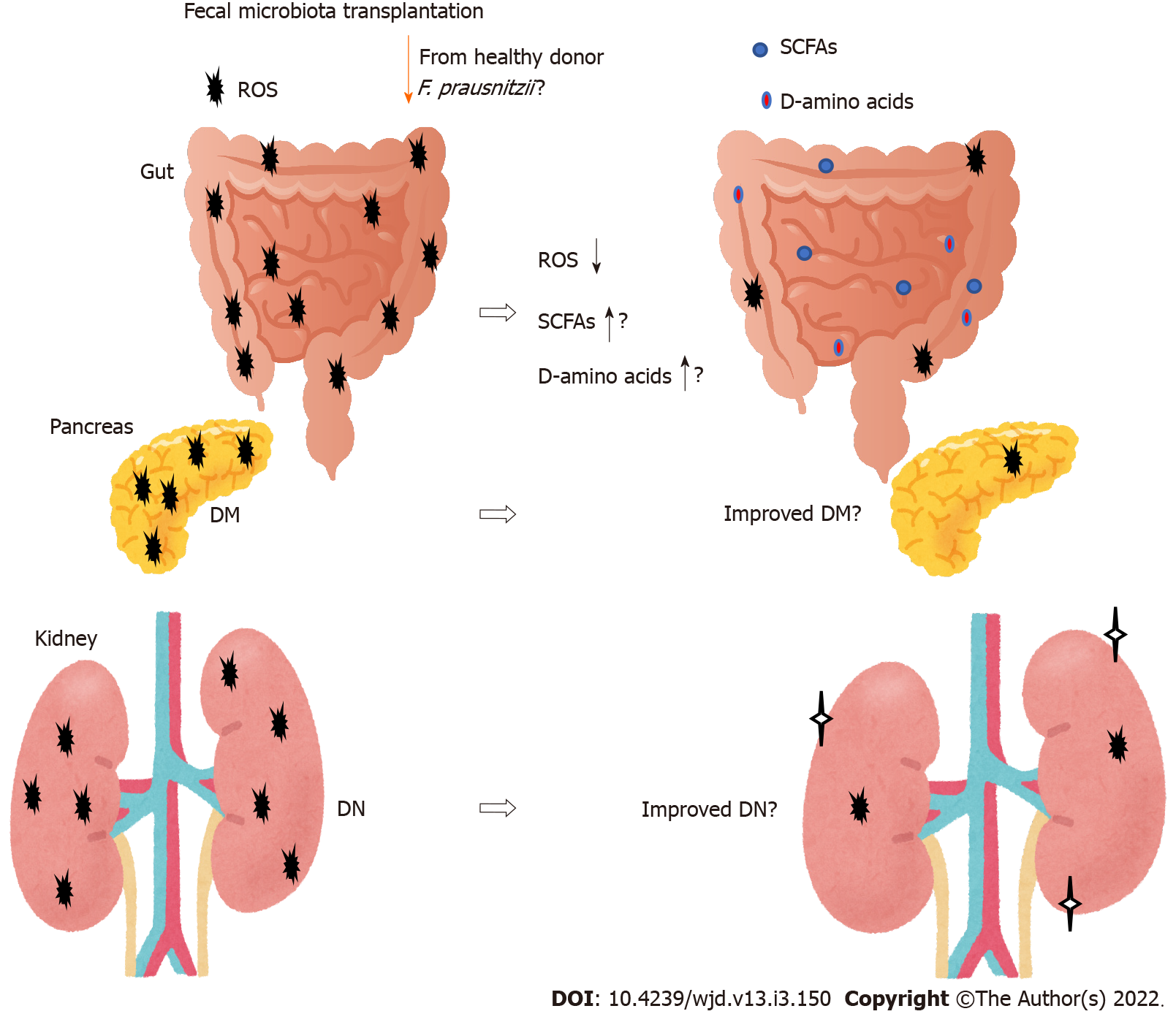Copyright
©The Author(s) 2022.
World J Diabetes. Mar 15, 2022; 13(3): 150-160
Published online Mar 15, 2022. doi: 10.4239/wjd.v13.i3.150
Published online Mar 15, 2022. doi: 10.4239/wjd.v13.i3.150
Figure 1 Representation of the pivotal role of gut-kidney axis crosstalk with the brain and the pancreas in the pathogenesis of diabetic nephropathy.
Hypothetical image of the pathogenesis pathway for diabetic nephropathy (DN). Sympathetic activation is a common feature in disorders of the brain as well as gut and kidneys. The brain is responsible for sympathetic outflow contributing to an increase in blood pressure and pathogenesis of the gut and kidneys. Dysbiosis in the gut results in an imbalance of intestinal homeostasis. Pathological events in the brain, pancreas, adrenal glands, gut and kidneys significantly contribute to the development of hypertension and DN. Note that some critical pathways such as inflammation pathway have been omitted for clarity. Ach: Acetylcholine; ADH: Antidiuretic hormone; ROS: Reactive oxygen species; DM: Diabetes mellitus; DN: Diabetic nephropathy.
Figure 2 Implication of increased short-chain fatty acids, decreased reactive oxygen species, and increased D-amino acids derived from gut in the renal protection and/or exacerbation against the progression of diabetic nephropathy.
Arrowheads mean stimulation and/or progression, whereas hammerhead represents inhibition. Note that some critical pathways including hormonal regulation have been omitted for clarity. SCFAs: Short-chain fatty acids; ROS: Reactive oxygen species; DN: Diabetic nephropathy.
Figure 3 The gut microbiota could contribute to the favorable production of short-chain fatty acids, reactive oxygen species and D-amino acids against progression of diabetic nephropathy.
Fecal microbiota transplantation consists of fecal microbiota infusion from a healthy donor to a recipient, which has been likely more successful than conventional therapy for diabetic nephropathy. Note that some critical events such as cytokine-induction have been omitted for clarity. SCFAs: Short-chain fatty acids; ROS: Reactive oxygen species; DN: Diabetic nephropathy; DM: Diabetes mellitus.
- Citation: Nagase N, Ikeda Y, Tsuji A, Kitagishi Y, Matsuda S. Efficacy of probiotics on the modulation of gut microbiota in the treatment of diabetic nephropathy. World J Diabetes 2022; 13(3): 150-160
- URL: https://www.wjgnet.com/1948-9358/full/v13/i3/150.htm
- DOI: https://dx.doi.org/10.4239/wjd.v13.i3.150











